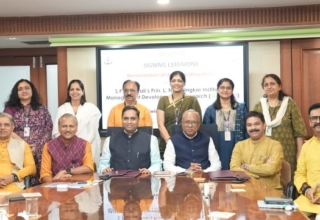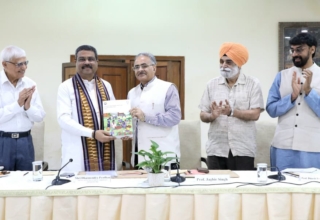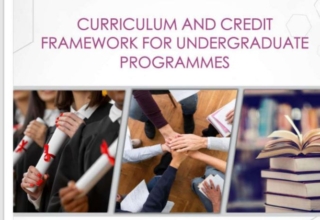
30-45 minute periods recommended with two synchronous sessions for classes 1-8 and four classes for classes for 9-12 on a day

PRAGYATA Guidelines developed by MHRD from the perspective of learners, with a focus on online/blended/digital education for students who are presently at home due to lockdown and released on July 14 recommend a cap on duration and number of online sessions in a day for students from Class I to XII.
While the non-binding guidelines recommend not more than 30 minutes for interacting with parents and guiding them in case of preprimary children, for classes 1 to 12 , it has suggested adaptation of the alternative academic calendar of NCERT at http://ncert.nic.in/aac.html. Two sessions/online classes of 30-45 minutes each have been recommended in continuity for classes 1-8 while as it is for classes 9-12 there can be four classes of 30-45 minutes each in a single session on a day.
These guidelines for school heads and teachers describe the need assessment, planning and steps to implement digital education while ensuring cyber safety and privacy measures. It also outlines the support to be provided to students with special needs. Main emphasis is on balanced online and offline activities keeping the screen time as an essential parameter in accordance with the level of students.
The Guidelines also emphasize the need to unify all efforts related to digital/ online/on-air education, benefitting school going children across the country. The initiative includes DIKSHA, SWAYAM Prabha, SWAYAM MOOCS, Radio Vahini, Shiksha Vaani, Special content for children with special needs and ITPAL. In a country like India characterized by multifarious diversity, switching over to digital modes of education needs various States/ UTs level organization and National level organizations to join hands for a change that will sustain post-COVID-19 also.
The PRAGYATA guidelines include eight steps of online/ digital learning that is, Plan- Review- Arrange- Guide- Yak(talk)- Assign- Track- Appreciate. These steps guide the planning and implementation of digital education step by step with examples.


Guidelines for physical health and mental wellness is stressed across the guidelines for all stakeholders measures so that children do not get overly stretched or stressed, or get affected negatively (postural defects, ophthalmic issues, and other physical problems) owing to prolonged use of digital devices. Also it provides sufficient Do’s and Don’ts regarding ergonomics and cyber safety.




HRD minister Ramesh Pokhriyal while releasing the guidelines said that these have been developed keeping in view relevance and usefulness for a diverse set of stakeholders including school heads, teachers, parents, teacher educators and students. The minister further said that to mitigate the impact of the pandemic, schools will not only have to remodel and reimagine the way teaching and learning have happened so far, but will also need to introduce a suitable method of delivering quality education through a healthy mix of schooling at home and schooling at school. Mos HRD, Sanjay Dhotre added that the online education has filled lot of gaps during the pandemic but utmost care has to be taken while using digital technologies to educate the students.
Reacting to the new set of guidelines, Manit Jain, Chairman, FICCI Arise expressed the opinion that while most of the guidelines are relevant it is important to make a distinction between good and bad screen time, however putting restrictions on timings without understanding the effect on learning continuity will have an adverse impact on students’ development. “There are several myths around online learning that need to be busted and policy makers must recognize that productive screen time is not only desirable but is necessary in such times. Many countries continue to run their entire time tables as they did when they were running in the physical environment. What if learning remains interrupted for the next 18 months? What might be the potential learning loss? What happens in International Boards where they will not cut substantial portions of the syllabus? What will happen to the last child who will not have access to a home environment that can compensate for the learning losses? ” he questioned, while adding, “We are repeating history, rather than looking at this as an opportunity for a potential renaissance in education to truly democratize learning, we are once again creating boundaries that will push us into mediocrity. We must focus on empowering teachers to embrace technology and put the students on a path of self-directed learning. This is the time to make learning devices and internet a fundamental right and to pave the way for a much needed learning revolution and to solve the issues of equity, access, quality and relevance. One definite fallout would be, that schools do limited work and educational technology providers mushroom to fill in the gaps as coaching centers have done in the past. This definitely needs a more informed review.”











